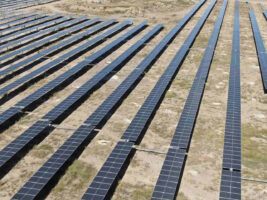EnergyAustralia parent company CLP Group has warned of “long-term challenges” to its generation business in Australia, both from the growth of large-scale renewables and from the likely return of a carbon price, despite the business posting an 82 per cent jump in first half operating earnings.

In a results announcement released late on on Monday, Hong Kong-based CLP Holdings said EnergyAustralia’s first half profit had rebounded from $HK493 million ($A84.3m) in the first half of 2015 to $HK897 million ($A153.4) in the first six months of 2016.
This was off the back of increased higher prices, higher electricity production and lower financing costs – and despite 5.1 per cent depreciation of the Australian dollar against the US dollar.
CLP said the increase in earnings was mainly due to more generation from its Yallourn, Mount Piper and Ecogen power plants, combined with lower finance costs after repaying most of its borrowings in December 2015.
And while those gains were partly offset by lower margins in the electricity retailing business and additional gas storage costs after EnergyAustralia sold its Iona gas storage plant last December, the company noted that wholesale electricity prices had largely benefited EnergyAustralia.
Indeed, the average NSW spot price rising to $60 a megawatt-hour in the first half, more than 70 per cent higher than the same half last year (and this does not include the first few weeks of July when soaring gas prices pushed electricity prices even higher).
The company also noted the “favourable conditions” in the Australian market, with “increased demand from LNG operations in Queensland, the reduction in supply following the closure of Alinta Energy’s Northern and Playford power stations in South Australia, and the rising cost of gas that has seen gas-fired generation offering power at higher prices.”
But CLP cautioned that, while near-term trading conditions had been more favourable, long-term challenges remained for the generation sector.
“Oversupply remains a potential driver of reduced prices and returns, particularly as large volumes of renewables enter the market in response to the Australian government’s Renewable Energy Target and emerging state-based policies,” the statement said.
And it added that a price on carbon was “likely to return in some form, with the impact on the sector highly dependent on what action is taken.”
CLP also noted that in Victoria, the coal royalty rate was set to rise as of January 01, 2017, and that this would increase the operating costs for brown coal generators.
But CLP – which says it is on track to raise its total global generation capacity from renewable energy sources to 20 per cent by 2020 from 17 per cent this year – has also warned that in Australia, progress in this department still hinges largely on the state of the political environment.
“Certainty to energy policy will be essential to build the confidence needed to invest in transitioning Australia’s energy sector to lower emissions, while ensuring reliable and affordable energy for consumers,” it says.
The comments point to a slight change in attitude from a company that, not so long ago, was notable for its implacable opposition to Australia’s Renewable Energy Target.
More recently, EnergyAustralia has given the appearance of trying to catch up with the rapid changes that are upending the energy market, with a change at the executive level and the establishment of a Next Generation Products and Services business, with a focus on battery storage, distributed energy and the establishment of an embedded networks business.
In its results announcement, EnergyAustralia says its battery storage sales are “consistent with the early adopter nature of the market” and that this part of the business is “positioned for growth as public awareness increases.”
On embedded networks – an interesting new division EnergyAustralia rolled out in June, dedicated to establishing and operating private electricity networks for apartment buildings, shopping centres, retirement villages, commercial parks and the like – the company says it has started work on multiple sites that are “expected to go live” in the fourth quarter.









